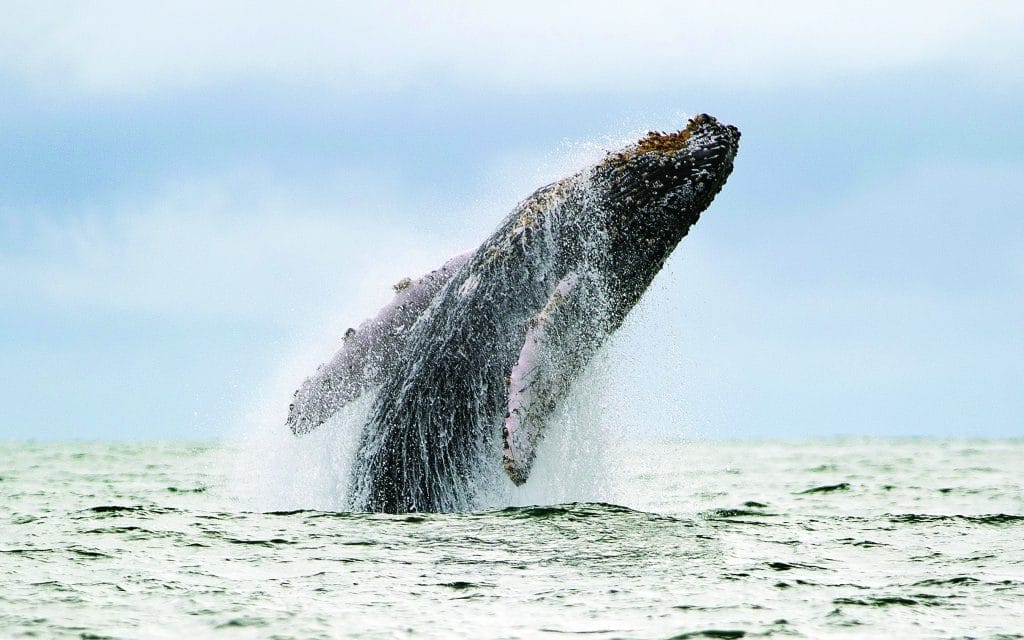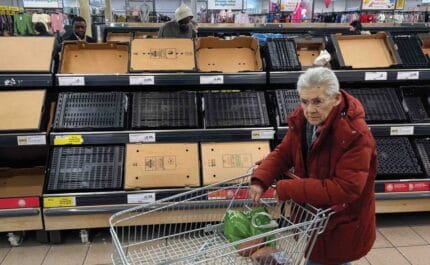Moment that mattered: The Cop26 conference comes to an end
In late 2021 we spoke to the head of the Climate Crisis Advisory Group, Professor Sir David King

Cop26 president Alok Sharma speaks during a press conference outside the Plenary Hall at the close of the climate change conference. Photo: Ian Forsyth / Getty Images
12th November 2021 (Taken from: #45)
One of the defining images of the UN’s Cop26 climate conference was of its president, British minister Alok Sharma, holding back tears of frustration on the final day as he expressed deep disappointment at its outcome. “I apologise for the way this process has unfolded and I am deeply sorry…” he said, after a late intervention by India and China changed the text of the final agreement to say that the global burning of coal without mitigation technology will be “phased down” rather than “phased out”. The key aim of the conference, to agree solutions that would limit global temperature increases to 1.5 degrees Celsius above pre-industrial levels, was not achieved.
For Professor Sir David King, former lead negotiator for the British delegations at Cop, including at the Paris Agreement in 2015, former chief scientific advisor to the Blair and Brown governments, and current chair of the Climate Crisis Advisory Group (CCAG), it is unsurprising that large, unwieldy forums like Cop find it hard to act decisively. “The average number of official negotiators per country is 20,” he says. “It means there are nearly 4,000 negotiators. As you might imagine, that is one hell of a way to negotiate anything.”
King thinks that trust was an issue at the latest conference. “I felt that in the negotiations themselves, the distrust between the emerging economies in the developing world and the developed world has really come to a head,” he says. “In 2009 developed nations promised $100 billion per annum [to help developing nations deal with climate change and grow their economies more sustainably] and that has never been realised. The negotiations stalled around that big problem and the question of loss and damage.” The final text signed off in Glasgow “notes with concern that the current provision of climate finance for adaptation remains insufficient to respond to worsening climate change impacts in developing country parties”.

A humpback whale jumps on the surface of the Pacific Ocean at the Uramba Bahia Malaga natural park in Colombia. Photo: Luis Robayo / AFP via Getty Images
Cop26 did register some successes. According to King and the CCAG, one of the biggest is the completion of the Paris Rule Book, a set of regulations that enables the assessment of countries’ implementation of the treaty agreed at Cop21 in 2015. Agreeing these rules has taken six years. Another significant outcome was a new partnership between the EU and the US designed to cut methane emissions by 30 percent compared with 2020 levels by 2030. India said it would aim to reach net zero emissions – although not until 2070 – and other countries agreed on stronger targets. China and the US announced they would work together to “enhance climate action” in the 2020s.
One area not addressed by the Cop26 agreement is tackling the effects of climate change in the Arctic Circle. “The climate scientists have been pointing out the so-called tipping points in the planet’s climate, and the starting point was felt to be the Arctic Circle region, with a loss of ice over the Arctic Ocean,” says King. “What we’ve seen is… such a loss of ice that in the three months of the polar summer, 50 percent of the Arctic Ocean is exposed to sunlight. This has not happened for hundreds of thousands of years.”
This exposure, says King, was implicated in recent dramatic weather events including devastating floods in Germany and wildfires in the US. “Blue sea soaks up sunshine and the air above it is also hot as a result. That heat flows over into the land mass around the Arctic Ocean, which is the permafrost region. The extreme weather events occurring right round the Northern Hemisphere – whether we’re talking about Germany or China or India or North America – could all be related back to what has happened in the Arctic Circle region… It all matched with those three months of the polar summer. The first tipping point has tipped.”
This tipping point, says King, will inexorably trigger the next. “When ice rapidly melts from Greenland, sea levels will rise by seven metres. It might take quite a long time, a couple of hundred years even, but humanity’s done with by that time. Every major city in the world would not be survivable, even with a 1.5 or 2 metre sea level rise. The permafrost also contains a vast amount of methane, and that methane is now beginning to be released explosively, leaving vast holes in the ice, 70 metres deep. The fear is that the methane will be released over a short period of time, a decade, and temperatures would then rise by five degrees minimum. Ten degrees is more likely.”
King and the CCAG are working on a plan to tackle the problem of blue sea in the Arctic Circle. “When I was in government, I never gave advice on some crisis without also providing a solution,” he says. “There’s little point in just talking about it.”
The solution he proposes is “marine cloud brightening” – the creation of white clouds to reflect sunlight back into space. “We are very keen to mimic what happens naturally,” says King. “When there’s a storm at sea, waves crash and you get tiny droplets of seawater. The smallest of these droplets are carried up by the movement of air. As they’re carried up they lose the water and you’re left with a tiny crystal of salt, not visible to the eye. As these crystals start floating down gradually they pick water up again, and there you have a white cloud. If these salt particles drop onto a black cloud, the black cloud is transformed into a white cloud.”
This process can be artificially replicated. “If we can create a very fine spray of seawater, we can create these white clouds,” says King. “So we make vessels that float on the sea and pump seawater through a device that creates tiny droplets of the right dimensions, and these droplets get picked up by wind to take them upwards. We would have to surround the whole of the Arctic Circle region with 700 to 1,000 of these vessels, and then when you get news from the Met Office that the wind is blowing towards the Arctic from one direction, you activate them. We’re reasonably confident that it’s going to work.” Development of a prototype sea vessel has already begun.
Alongside repairing the ice in the Arctic Circle, King’s big focus is on how to help remove existing greenhouse gases from the atmosphere. For this he has a truly extraordinary plan, which he is working on with a consortium of 16 institutions across the world.
King believes the mass of whales could be increased by a factor of four, leading to the removal of five billion tonnes of CO2 a year”
“Our work is based on a very recent understanding of the function of whales in the marine biosystem,” says King. “Whales tend to live 300-400 metres below sea level… When they come up, we thought [it was] just to breathe, but no, they come up to poo as well. When they’re 400 metres down, the pressure of the water shuts their orifices, you cannot possibly poo when you’re under that sort of pressure… You get a pod of whales coming up and this whale poo might extend over an area of [up to] 5,000 square kilometres. Just a thin layer. Within three days, that area is covered with green phytoplankton. Within about a month that area [is] teeming with fish – perhaps quarter of a billion of them”.
“What we will do is create artificial whale poo, suitable for a given area of the ocean and then we’ll distribute it on the surface,” continues King. This perfect blend of nutrients including nitrates, phosphates and silicates will create what he describes as “an entire biological system akin to a land-based forest.” Phytoplankton will draw down CO2. Fish and krill will eat the phytoplankton, the fish sequestering the CO2 when they die and sink to the bottom of the ocean and the krill sequestering the CO2 in their shells. The whale population will grow thanks to an upsurge in the availability of krill, their favourite food, and the “circular economy in the ocean” that was destroyed during the industrial culling of whales in the 18th and 19th centuries will be restored.
King believes the mass of whales in the ocean could be increased by a factor of four, leading to the removal of five billion tonnes of carbon dioxide a year, out of the estimated 30 billion which need to be sequestered in order to prevent runaway climate change.
He is hoping to present his findings on marine cloud brightening and the dissemination of artificial whale faeces at Cop27 in Sharm El-Sheikh, Egypt, in November. In the meantime he is also working to speed up decision making on global climate change solutions.
“The UN negotiating process is like trying to walk in molasses,” he says. “You’re stymied all the time, and yet we acknowledge there’s a crisis, and in a crisis we need a fast-track process. That’s why I’m pushing hard for the development of a smaller UN body that has the authority to move much more quickly. The crisis is such that humanity doesn’t have a future unless we get together and manage it.”
Slow Journalism in your inbox, plus infographics, offers and more: sign up for the free DG newsletter. Sign me up
Thanks for signing up.








